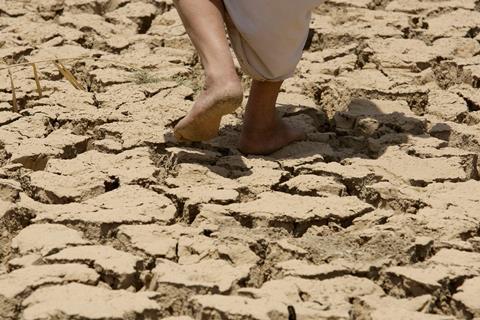Are recent reports that the Euphrates River is drying up an indicator of end times, or just a result of climate change? And should Christians care either way? Chris Follett explores the evidence

So that was the summer! After a promising spring, a disappointing July was followed by an even more dismal August. In the UK at least, normal service was resumed after the exceptionally hot summer we enjoyed last year. However even a cursory glance at the news headlines over the holiday period would have dispelled any thoughts that the climate crisis had somehow gone away. In southern Europe, temperatures rivalled those in Death Valley at one point, while wildfires, unprecedented in both their ferocity and scale, have ravaged communities across the globe.
Another apparent impact of the warming climate that has drawn some media attention is the deepening drought in the Tigris-Euphrates river basin, which has resulted in the Euphrates actually drying out in places. This particular environmental event has caused some excitement amongst end times enthusiasts, who have been quick to point out that just such an occurrence is prophesied by John in Revelation 16:12.
Cause and source
Before considering this particular prophecy and the claims that are being made by some commentators, it is helpful to briefly review the geography of the region and the particular local factors that have contributed to this situation.
The environmental crisis is, more generally, surely a foreshadowing of the end of days
The source of both the Euphrates and Tigris rivers is located in Northeastern Turkey. The rivers run roughly parallel across the southern border of Turkey into Syria then onward to Iraq, where they eventually join together before discharging into the Persian Gulf. These two rivers account for the region’s relative fertility (forming an area known as the Fertile Crescent), in an otherwise arid part of the world, providing a vital source of water that has sustained communities since earliest times.
The principal cause of the drought has been a substantial (and sustained) drop-off in rainfall and snow melt that would normally feed the rivers. This climate related problem has been greatly exacerbated by over-extraction and poor water management. As with so many of the great rivers across the world, the Euphrates has been dammed at various points along its course, with consequent negative impacts to those reliant upon its waters further downstream. This has inevitably led to regional tensions, similar to those that are being witnessed today between countries on other transnational rivers such as the Nile and the Mekong.
Biblical basis
The first mention of the Euphrates (and indeed the Tigris) in scripture is in Genesis, where the rivers are listed as those that “flowed out of the Garden of Eden” (Genesis 2:10-14). A prophecy about the Euphrates drying up is found in Jeremiah 50:38, which bible scholars believe was fulfilled when the Persian king Cyrus conquered Babylon in 539 BC. Specific reference to the Euphrates drying up is found again in Revelation. It is this latter prophecy that has caused a particular stir, as it relates directly to end times prophecies.
More on end times:
- Confused about end times? Start here
- Apocalypse now: How the end times went mainstream
- Freedom in Christ founder Neil T Anderson on spiritual warfare, mental health and the end times
- End times theology: Why Russia’s invasion of Ukraine is significant
- Fraud, Antichrist or Messiah? The end times drama everyone is talking about
- Franklin Graham is speculating in his end times tweet. No one knows when Jesus will return
It is fair to say that some view the end times as a little bit like a jigsaw, where the name of the game is to identify world events and happenings that constitute another piece of the puzzle. Eventually, when sufficient pieces are in place, they believe that the return of Christ must necessarily follow.
Thus, the Euphrates drying up is interpreted by some as another piece of the end times puzzle, surely hastening the return of the Lord. This may seem like a fair conclusion. But the scripture in question has a very specific context that no-one is suggesting applies today. The event described in Revelation 16 occurs at the end of the extensive period of tribulation. It is not an environmental judgement upon the earth, but rather a necessary precursor to the decisive battle of Armageddon, when a mighty army assembled by “the kings of the East” will array themselves against the Lord in Israel.
End times view
Nonetheless, while we might dismiss the idea that this particular drought event is a fulfilment of a specific end times prophecy, we should recognise that the environmental crisis is, more generally, surely a foreshadowing of the end of days - whenever that might actually come about. I say this simply because it is widely acknowledged that if humanity continues on its present trajectory, life as we currently know it will become unsustainable. For those who have lost everything in the recent wildfires, this is a very present reality rather than an abstract threat.
Some view the end times as a little bit like a jigsaw, where the name of the game is to identify world events and happenings
As believers, we are called by Christ to be salt and light in this world. Whether we prove to be the end times people of God or not, the mission of the Church has not changed, and it won’t change until the day of the Lord’s return. And when the rapture occurs, Jesus tells us that those who are taken up are going about their day-to-day lives (see Matthew 24:40-41). We do not need to second-guess the Lord’s return; we just need to keep doing the things he has called us to do.




































6 Readers' comments